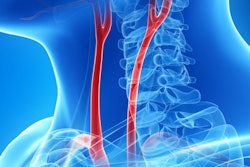Dear Ultrasound Insider,
Contrast-enhanced ultrasound (CEUS) scans may one day help physicians predict which patients with chronic kidney disease will experience worse outcomes.
A new study in Ultrasound in Medicine & Biology found several features on CEUS scans were correlated with more severe chronic kidney disease progression. One such feature -- derived peak intensity -- looked like an especially promising predictor of disease severity. Read more in this edition's Insider Exclusive.
Also new in the Ultrasound Community, the U.S. Preventive Services Task Force (USPSTF) is poised to once again recommend against screening for asymptomatic carotid artery stenosis. The USPSTF last weighed in on the topic in 2014, concluding that the harms of screening in the general population outweighed the benefits. In a draft recommendation statement, the agency said there wasn't enough new evidence to change its previous recommendations.
As has been the case for most of 2020, the Ultrasound Community is filled with content on the use of ultrasound for COVID-19. One of the newer noteworthy studies came from a team of Spanish physicians who found that lung ultrasound showed similar accuracy to CT for patients with the novel coronavirus. Based on their research, the authors felt comfortable recommending ultrasound as a first-line and follow-up imaging test for COVID-19.
As we move further into the second half of the year and begin to think about life beyond the pandemic, one of the questions raised is what the new normal of ultrasound will be. Will it remain a more prominent imaging modality even after the pandemic is over? Some early research and anecdotal reports suggest that, yes, physicians may continue to use ultrasound more frequently, especially for patients with pulmonary conditions.
What do you think? Is COVID-19 driving an increase in long-term ultrasound use? Has your practice or facility acquired new ultrasound equipment to address the pandemic? I'd love to hear your thoughts. Share your experience through email or Twitter.



















